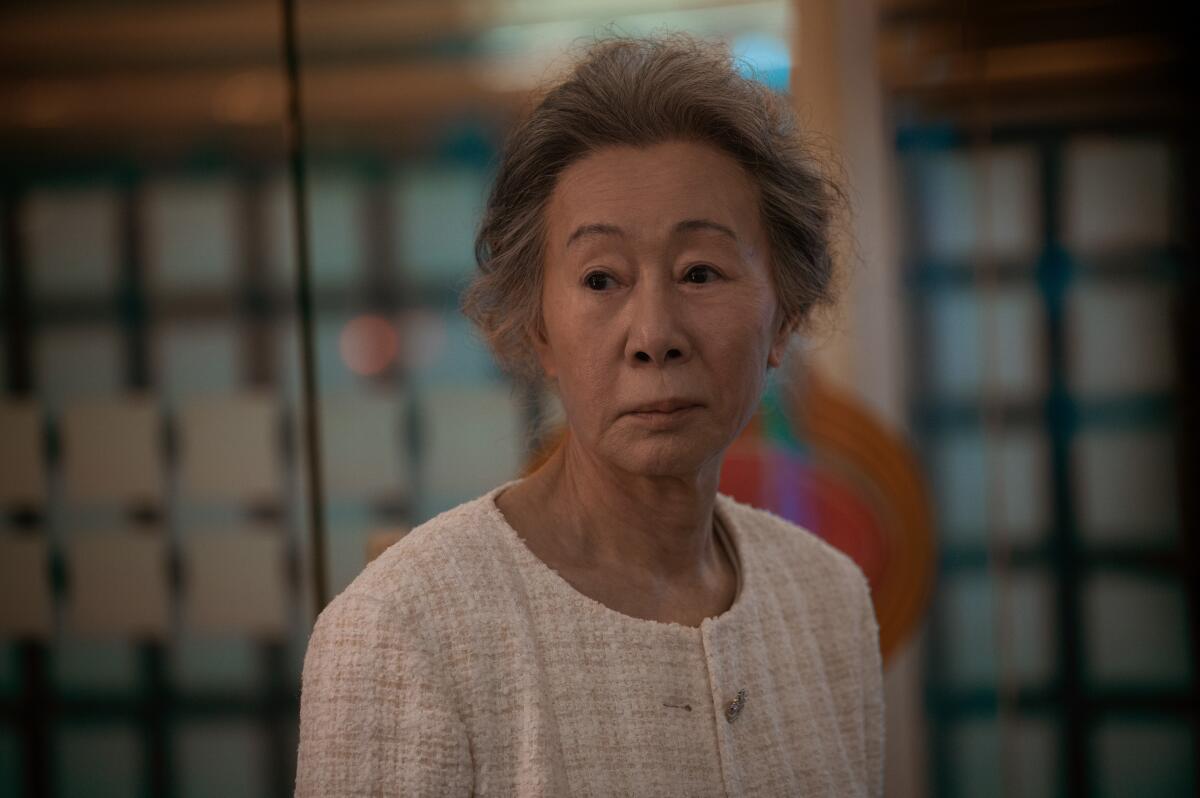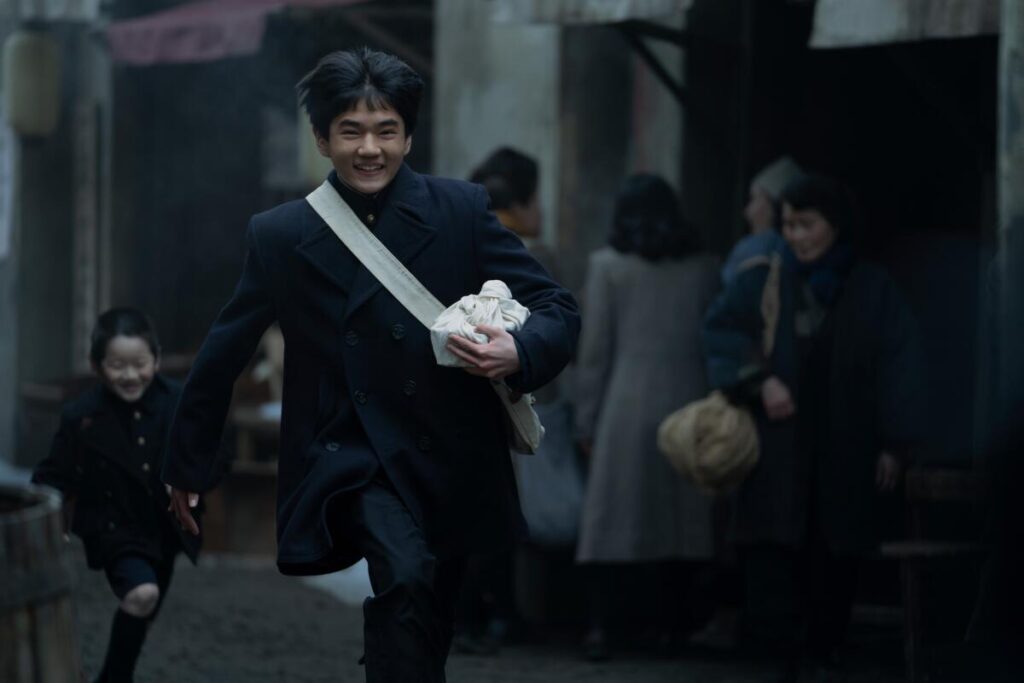“Pachinko,” a beautifully wrought historical melodrama, is back for its necessary second season, to fill in some holes, fiddle with loose ends and extend the story even farther beyond the borders of Min Jin Lee’s 2017 novel. It is a transitional season, which ends with little resolved and gaps still to fill, and while it offers all the sensual pleasures of the first season’s performances and production, its portion of love and death, it is very much the middle of a book.
Unlike the novel, which proceeds chronologically, the series, returning Friday on Apple TV+, alternates between the “present day” — 1989 Osaka — and the evolving story that gets us there. Season 1 began in 1915 before the birth of main character Sunja (Minha Kim) in Japanese-occupied Korea, then followed her through her country-girl youth into a romance with handsome, dangerous Hansu (Lee Minho). An unexpected pregnancy led to a marriage of convenience, later affection, with Isak (Steve Sanghyun Noh), a Christian preacher; together they moved to Osaka to join his brother Yoseb (Junwoo Han) and wife, Kyunghee (Eunchae Jung), where they become Zainichi, the term for Koreans living in Japan — a population much discriminated against. (Incidents of prejudice dot the current season, almost as a reminder of what the first season firmly established.)
That storyline got us to 1938. The new season picks up in early 1945 (skipping much of the novel), and times are difficult as Japan fearfully braces for an American attack; Sunja and Kyunghee eke out a living selling kimchi, and the cabbage has almost run out. Sunja’s children, Noa (Kang Hoon Kim), her son with Hansu, and Mozasu (Eunseong Kwon), her son with Isak, have grown accordingly. Noa, who is unaware of his birth father and takes after his adoptive father, is shy and studious, Mozasu brash and unsuited to study. Isak is in prison, having been arrested last season for rabble-rousing; Yoseb is working in a munitions factory in Nagasaki, which should raise an eyebrow. But a friendly new character, Mr. Kim (Kim Sungkyu), is hanging around helpfully, and Hansu, keeping an eye on them from near and far, will be back and involved.
In Season 2, Mozasu (Eunseong Kwon), left, and Noa (Kang Hoon Kim) are a little older.
(Apple)
(The Nagasaki sequence, which opens the fifth episode, is shot in black and white in standard aspect ratio, before returning to color and widescreen when the bomb drops. The title credit that follows omits the usual cheerful shots of the cast dancing to the Grass Roots‘ “Let’s Live for Today” as inappropriate. Understandably.)
Nearly all the capital of the 1989 storyline having been spent in the first season, showrunner Soo Hugh has had to create fresh material to keep those characters busy while the earlier narrative catches up. (At the end of the season, they still have three decades to go.)
Older Sunja (Yuh-Jung Youn) is still living in Osaka with her successful son Mozasu (Soji Arai), who has grown up to own pachinko parlors — a sort of pinball cum slot machine — and, as a somewhat disreputable if popular business, one of the few avenues then open to Koreans. (Mozasu himself, a major character last season, is mostly absent from this one.) Mozasu’s son, Solomon (Jin Ha), college-educated in America, is in Tokyo, involved in high finance and real estate. In Season 1, he’d attempted to pry an old woman from her home in hopes of putting a golf resort on the land and impressing his bosses; in the end, he advised her not to sign the papers, but the current season finds him unfortunately back on that horse, in a complete moral backsliding. (I found the particulars of Solomon’s business dealings somewhat hard to follow, or perhaps just not worth the effort.)
This authorial trouble making might be expressed in the old Hollywood formulation as “boy meets girl, boy loses girl, boy gets girl, boy loses girl, boy gets (possibly a different) girl” and so on, whether or not we are actually talking about boys and girls. It’s a problem familiar to ongoing original series, where fresh conflicts must be created each year. One expects it will build eventually to another shot at redemption — the series is too sentimental, too good-hearted not to offer him the chance.

Older Sunja (Yuh-Jung Youn) in “Pachinko.”
(Apple)
And of course we get enough of Good Solomon to justify our interest, just as we get enough of Good Hansu to make up for his criminality. Parts of Solomon’s story, which brings in some unsavory characters, do feel constructed as a deliberate mirror of Hansu’s; perhaps not coincidentally they are played by the show’s best-looking actors. As to Sunja’s new, extra-textual adventures, she’ll strike up a friendship with a man at the supermarket that allows for an adorable scene in a Mexican restaurant, something seemingly new to 1989 Osaka.
Though historical events are acknowledged, what with World War II and the Korean War falling within the earlier timeline, and the Japanese asset price bubble and crash on the horizon in the later one, the current season focuses on family life and domestic detail, even as, or perhaps because it’s disrupted. In 1989, Sanju travels on her own from Osaka to Tokyo to check on her grandson, whom she senses is not all right. There’s a lovely scene in which she slices vegetables alongside Solomon’s Japanese love interest and former colleague, Naomi (Anna Sawai); I almost wrote “throwaway scene,” but, in fact, that naturalism is essential to the series, making something real out of the extravagant, even soap-operatic plotting.
And food, often in short supply in the earlier storyline, plays a part — making a meal, making a living, making a place at the table, making a home — most tangibly, out of a barn that Sanju, Kyunghee, Noa, Mozasu and Mr. Kim occupy at the end of the war. (Hansu’s tragedy is that though he provides support for the family, with or without the knowledge, he remains an outsider.) Characters speak of a “life well lived,” which is not at all the same thing as living well.
Obviously, this is not the season to start with “Pachinko,” but if you haven’t yet, it’s worth beginning at the beginning. Even if you watched the first season — which, given that you’ve read this far, I assume you have — it may be worth a look back to remember who all these characters are, what they have to do with one another, and what kind of trouble they got in and out of previously. And if the new season lacks the expositional energy of the first, if it’s more muted in tone, if Sunju is not quite the ray of sunshine she was, her older self will still have occasion to say here that hers was a life well lived.

